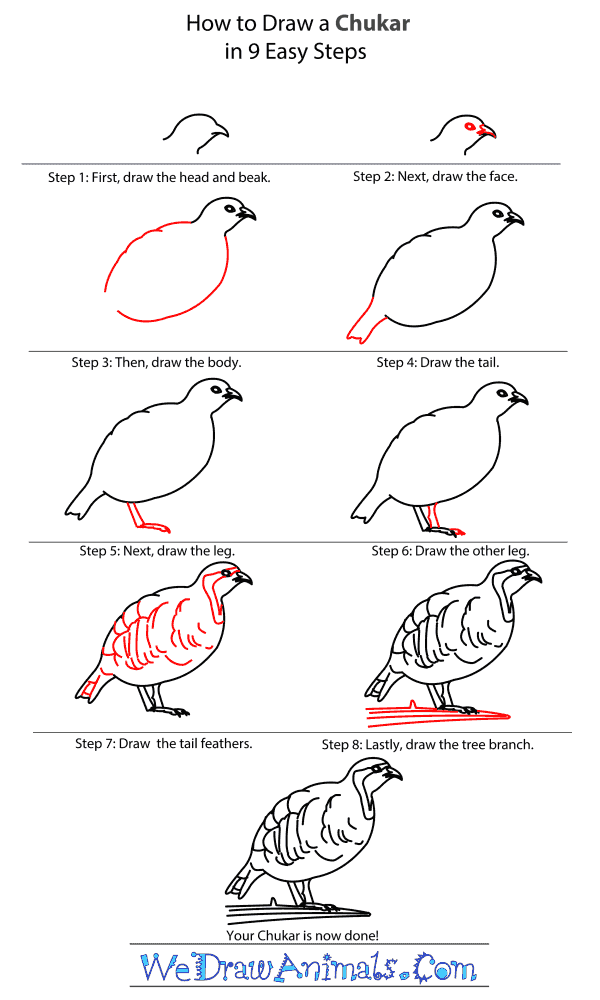In this quick tutorial you'll learn how to draw a Chukar in 8 easy steps - great for kids and novice artists.
The images above represent how your finished drawing is going to look and the steps involved.
Below are the individual steps - you can click on each one for a High Resolution printable PDF version.
At the bottom you can read some interesting facts about the Chukar.
Make sure you also check out any of the hundreds of drawing tutorials grouped by category.
How to Draw a Chukar - Step-by-Step Tutorial
Step 1: Draw a circle with a triangle on the side for the eye and beak.
Step 2: Near the beak, draw a seed-like shape for the eye. Using the image as a guide, add a curved line along the beak.
Step 3: Draw a large oval beneath the head, leaving a space near the bottom for the tail.
Step 4: In the space, draw a rectangle with a curved end.
Step 5: Underneath the body, draw a rectangle. Attach a skinny oval that points towards the front of the body for a foot.
Step 6: Repeat step 5 for the second leg.
Step 7: Draw a pattern around the eye and neck. Add curves and lines on the body and tail for feathers.
Step 8: Draw a long cylinder with wavy lines on it under the feet for a tree branch. You have drawn a chukar! Color the band on the face and markings on the body black; leave the face white, with a grey chest and brown body.
Interesting Facts about Chukars
Chukars are like chickens. They first came from Pakistan, but early settlers introduced the bird to the American west. Chukars like to live in mountainous areas and eat seeds. They have become a very common hunting bird all over the world. Chukars can be found in Africa, China, Russia, and other parts of Europe. They grow to be 13-15 inches long and they don’t really fly. Chukars like move on the ground, when they do fly they can’t go very far. They are brown with blue gray feathers toward their bottoms. Black and white stripes decorate the wings and a black stripe covers their eyes.
Did you know?
- There are 14 species of Chukars.
- Chukars build their nests on the ground and lay 10-21 eggs per nest.
- Each full grown Chukar has 14 tail feathers.
- Chukars are considered extinct in Kuwait.
- Chukars travel in groups of 10-50 birds.
Lesson Plan Note: In Indian mythology the Chukar is used to symbolize unrequited love. Find a telling of this story and share it with your class. Then ask them to illustrate their favorite part. Older children and teens can write essays on the symbolism and the moral lessons of the story.









